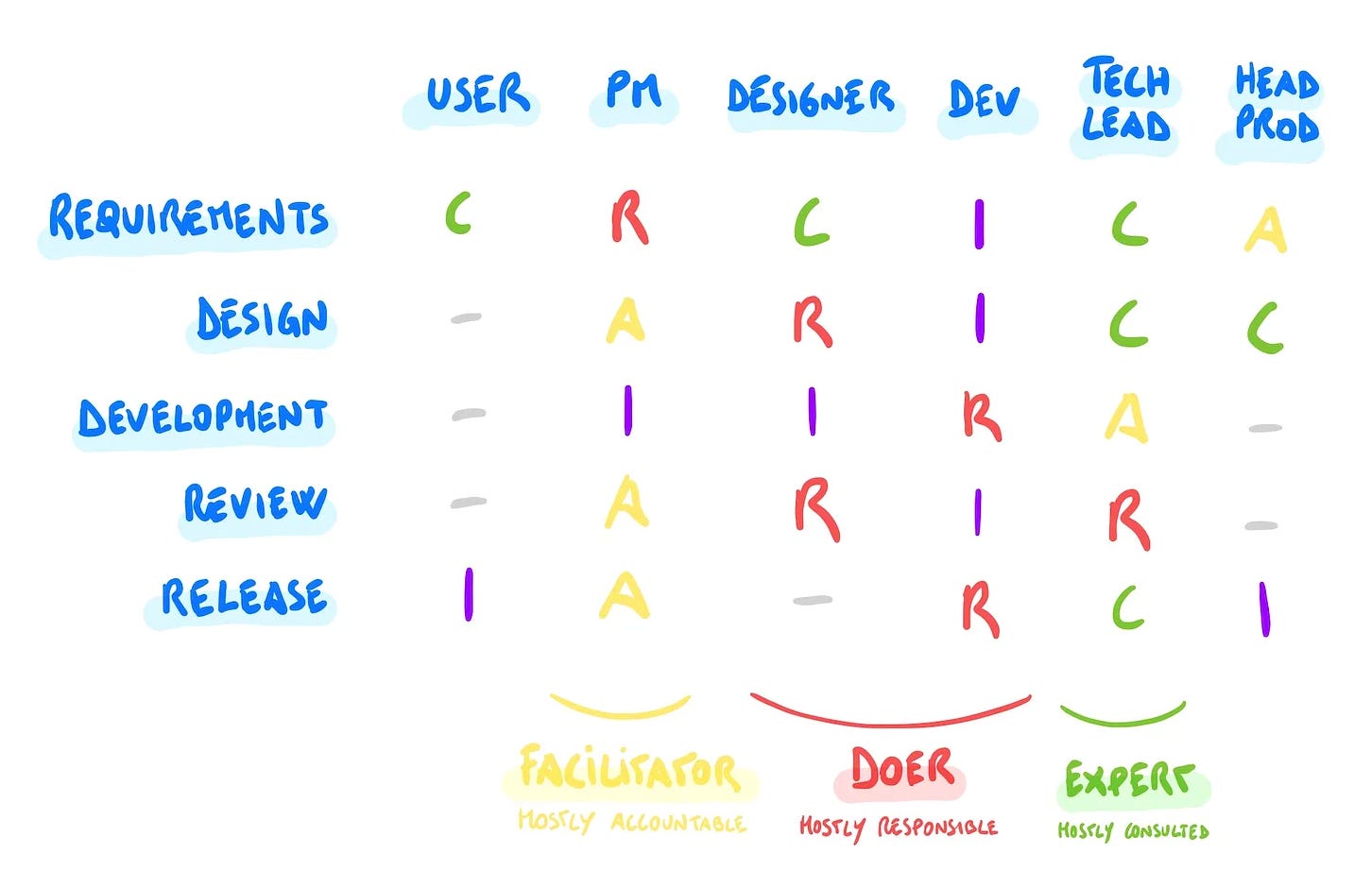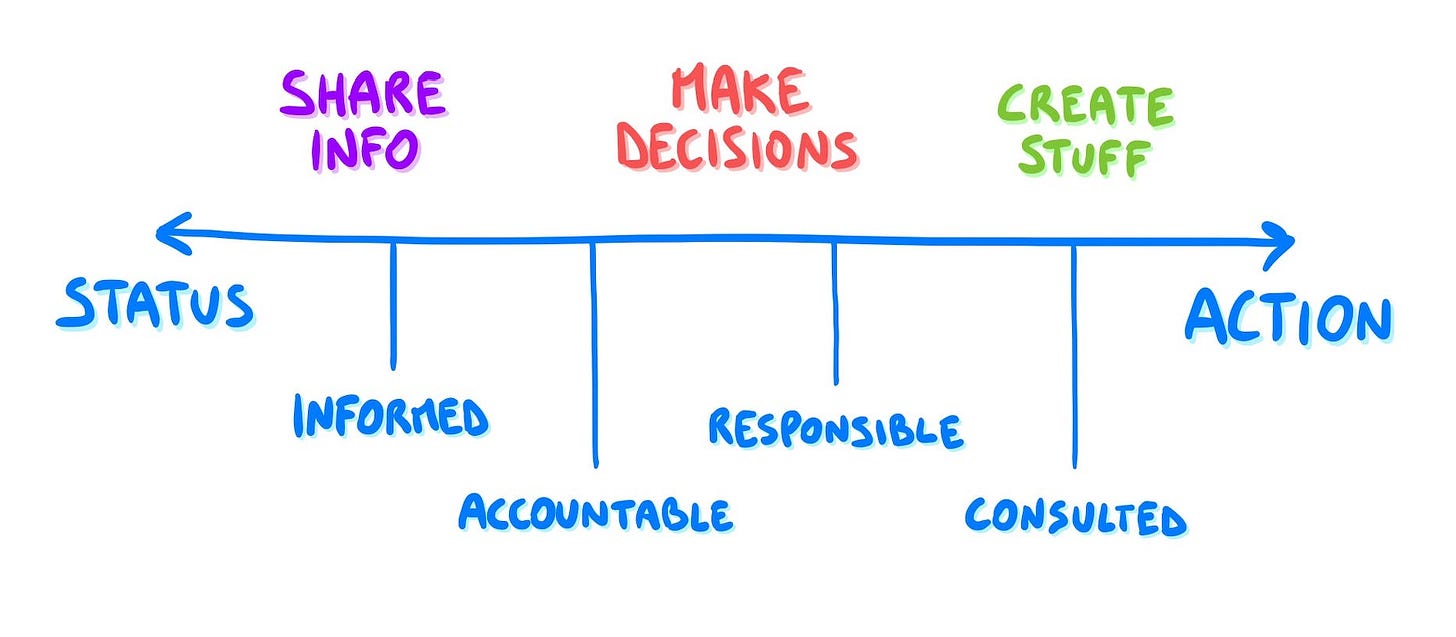How to Create a Great Remote Team 🧰
An extensive guide that builds on three years of articles and conversations.
Over the years I have written tens of articles about remote work, each usually from a specific angle: how to reduce meetings, improve communication, create better relationships, and more.
Today I am going to weave everything together in a full guide about how to create a good remote workflow: for your team, and for yourself.
Going into this article, you may wonder whether the whole idea of a “remote workflow” makes sense: should remote teams work any differently than co-located ones?
Yes and no.
Many principles for collaboration are universal and work for everybody, but remote work has also specific challenges you need to account for.
Based on my own work experience, and conversations I had with countless tech leaders, here are the four main factors you should consider:
🧠 Mindset — how remote shifts the mindset and the culture of your team.
📣 Communication — how to bring clarity, reduce meetings, and make async effective.
📑 Documentation — how to make people write and use docs (for real!)
❤️ Relationships — how to nurture relationships in a remote team.
Let’s dive in and look at each of them!
Also, since this is an extensive piece, we are going to experiment making about half of it free for everybody, and the rest exclusive to paid subscribers. It feels like a fair way to create value for everyone, but let us know your thoughts!
🧠 Mindset / Culture
Those of you who transitioned from an office to remote may have noticed this: remote work is unforgiving and exposes all the flaws in your processes.
That’s because remote makes communication more expensive:
1) Calls are less effective and more draining than meetings
I have found that, in-person, you can have good or bad meetings.
In good meetings you can feed off other people’s energy, get into a state of flow together, and create something great by taking advantage of the incredible bandwidth of being in the same room together.
It’s basically impossible to recreate this in a call. Energy is not there, and non verbal communication falls off a cliff, so most calls are just miserable.
Of course, there are bad meetings in real life, too — probably most of them, to be fair — and these, translated into calls, become even more unbearable.
2) Casual interactions are harder
Most communication inside a team doesn’t happen in meetings. It happens in casual, 1:1 chats, which are also made worse by remote.
Writing a DM on Slack is not like peeking over somebody’s shoulder. You can’t expect to get an immediate answer, so you have to adjust to a workflow where people are just less available around you.
Remotely, people spend less time around others, and processes need to be adapted to enable people to do equally well, with less direct communication.
Fortunately, that’s where some magic happens 👇
3) Empowering crafters
Good teams figure out that, by restricting communication, people work better.
By reducing meetings, improving written docs, and favoring async comms, you naturally lose some bandwidth, but you also remove a ton of lazy / inefficient habits — and the benefits of the latter more than compensate for the former.
So, remote can act as a forcing function for better communication.
As I discussed a few months ago with Kaz Nejatian, COO of Shopify, building a remote team means building a team around crafters, and the act of crafting.
Engineers are crafters of tech, while managers are crafters of processes and systems.
If your team workflow is a system, then the need for a meeting is like a missing API. Managers should continuously improve such a workflow so that less and less unstructured communication is required.
So let’s see how you can do that.
📣 Communication
I have found that work communication has three main goals:
📃 Sharing info — e.g. for status update, or to answer a request for help. In meetings, examples are sprint reviews, or when you demo new features to stakeholders.
🎲 Making decisions — for when you need to decide how to move forward. E.g. in a planning meeting when you prioritize stuff and decide what to work on next week.
🧱 Creating stuff — brainstormings, design sessions, problem solving, and anything where something gets created through the collaboration of the participants.
These goals live on an ideal line that goes from mostly passive/unidirectional communication, to mostly active/multidirectional.
More simply, it goes from status to action.
There is at least a fourth kind of meeting, which is about bonding: celebrations, mob programming, watercoolers, and more. These are extremely valuable, but I pit them in a different category as they focus on relationships rather than actual output. We will cover them later in the article.
1) Status vs Action ⚔️
Back to status vs action, I have two strong beliefs that come from this:
🪚 Meetings should be unbundled — most meetings do not belong to a single type: they are a mix of many, because they need to suit different stakeholders. Rather than removing a meeting altogether, you can remove some parts (and some attendees), to make the rest shorter and more cohesive, so that nobody thinks they are wasting their time.
🏃 You should use meetings for action — meetings are high-bandwidth. The best use of such bandwidth is for creating things and solving problems, rather than sharing information. The latter can be usually done asynchronously just as well.
So, the best way to reduce meetings is to 1) split them into parts, and 2) remove / make async those about status.
2) People’s roles 👑
A takeaway from this mental model is that you can improve communication by being intentional about what you want to achieve. If you are well aware of what people need from a meeting, you can make the meeting better, split it, and sometimes replace it with something else altogether.
To achieve this, I find it useful to reflect on people’s roles by means of the RACI chain. I know that many despise it and find it overly theoretical, but when you stick to the core ideas, it is simple and useful.
RACI pits people who participate in any project (or meeting), into four roles:
🔨 Responsible — those who actually do the job.
👑 Accountable — those who ultimately sign off on the job and are answerable for it.
🤝 Consulted — those whose opinions are sought but do not work directly on the job.
📣 Informed — those who are kept up-to-date on the status of the job.
If you think about them as meeting attendees, it’s easy to see that each role is interested in different things:
📣 Informed people are interested in status. They don’t make decisions nor participate in doing stuff.
👑 Accountable people make decisions and need status to do so. But they don’t join the creation process.
🔨 Responsible people don’t need info (they provide it to others). They usually join in the decision making, and also build stuff themselves.
🤝 Consulted people don’t need info and don’t participate in the decision making, but may be involved in the building part as domain experts.
By being aware of what everybody needs to know and do, you can create communication that is effective for everybody, with the right mix of sync / async, instead of e.g. putting everybody in the same meeting room for 2 hours.
3) Structuring communication 🏯
Written communication only goes so far if what you write isn’t clear, exhaustive, or understandable enough.
We tend to take this for granted but I have found there is a lot we can do intentionally to make our communication better from a content point of view.
Among the tactics that I like the most, there is The Pyramid Principle, by Barbara Minto.




